Advice on combining size-based management with family history and other factors
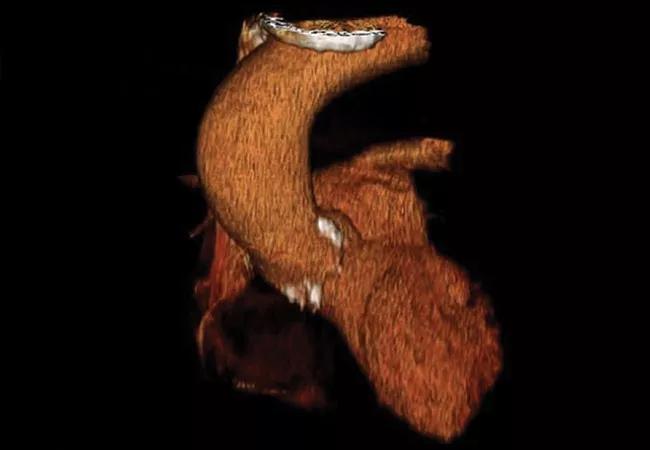
By Frank Cikach, MD; Milind Y. Desai, MD; Eric E. Roselli, MD; Vidyasagar Kalahasti, MD; and Lars G. Svensson, MD, PhD
Cleveland Clinic is a non-profit academic medical center. Advertising on our site helps support our mission. We do not endorse non-Cleveland Clinic products or services. Policy
This post is excerpted and adapted from a recent review article in Cleveland Clinic Journal of Medicine (2018[June];85:481-492), focusing on that article’s discussion of management of thoracic aortic aneurysm following diagnosis and classification. The full article, which includes a couple of illustrative case vignettes, is freely available at this link.
Patients with a new diagnosis of thoracic aortic aneurysm should be referred to a cardiologist with expertise in managing aortic disease or to a cardiac surgeon specializing in aortic surgery, depending on the initial size of the aneurysm.
Medical management for patients with a thoracic aortic aneurysm has historically been limited to strict blood pressure control aimed at reducing aortic wall stress, mainly with beta-blockers.
Current guidelines recommend stringent blood pressure control and smoking cessation for patients with a small aneurysm not requiring surgery and for those who are considered unsuitable for surgical or percutaneous intervention (evidence level C).1 For patients with thoracic aortic aneurysm, it is considered reasonable to give beta-blockers. Angiotensin-converting enzyme inhibitors or angiotensin receptor blockers may be used in combination with beta-blockers, titrated to the lowest tolerable blood pressure without adverse effects (evidence level B).1
The recommended target blood pressure is less than 140/90 mm Hg, or 130/80 mm Hg in those with diabetes or chronic kidney disease (evidence level B).1 However, we recommend more stringent blood pressure control: i.e., less than 130/80 mm Hg for all patients with aortic aneurysm and a heart rate goal of 70 beats per minute or less, as tolerated.
Activity restrictions for patients with thoracic aortic aneurysm are largely based on theory and empirical experience, and certain activities may require more modification than others. For example, heavy lifting should be discouraged, as it may increase blood pressure significantly for short periods of time.1,2 The increased wall stress, in theory, could initiate dissection or rupture. Patients with aortic dissection are often noted to have performed activities associated with straining, particularly involving rapid upper chest rotation, such as in tennis, golf, swinging an ax, throwing rocks, etc. However, moderate-intensity aerobic activity — such as jogging, cycling, walking, etc. — is rarely associated with significant elevations in blood pressure and should be encouraged. Stressful emotional states have been anecdotally associated with aortic dissection; thus, measures to reduce stress may offer some benefit.2
While there are no published guidelines regarding activity restrictions in patients with thoracic aortic aneurysm, we use a graded approach based on aortic diameter:
We also recommend not lifting anything heavier than half of one’s body weight and to avoid breath-holding or performing the Valsalva maneuver while lifting. Although these recommendations are somewhat arbitrary, based on theory and a large clinical experience at our Aorta Center, they seem reasonable and practical.
Activity restrictions should be stringent and individualized in patients with Marfan, Loeys-Dietz or Ehlers-Danlos syndromes due to increased risk of dissection or rupture even if the aorta is normal in size.
We sometimes recommend exercise stress testing to assess the heart rate and blood pressure response to exercise, and we are developing research protocols to help tailor activity recommendations.
To a cardiologist at the time of diagnosis. As soon as thoracic aortic aneurysm is diagnosed, the patient should be referred to a cardiologist who has special interest in aortic disease. This will allow for appropriate and timely decisions about medical management, imaging, follow-up and referral to surgery. Additional recommendations for screening of family members and referral to clinical geneticists can be discussed at this juncture. Activity restrictions should be reviewed at the initial evaluation.
To a surgeon relatively early. Size thresholds for surgical intervention are discussed below, but one should not wait until these thresholds are reached to send the patient for surgical consultation. It is beneficial to the state of mind of a potential surgical candidate to have early discussions pertaining to the area of concern and the types of operations available, their outcomes, and associated risks and benefits. If a patient’s aortic size remains stable over time, he or she may be followed by the cardiologist until a significant size has been reached or growth has been documented, at which time the patient and surgeon can reconvene to discuss options for definitive treatment.
To a clinical geneticist. If one or more first-degree relatives of a patient with thoracic aortic aneurysm or dissection are found to have aneurysmal disease, referral to a clinical geneticist is very important for genetic testing for multiple genes that have been implicated in thoracic aortic aneurysm and dissection.
Surgery to prevent rupture or dissection remains the definitive treatment of thoracic aortic aneurysm when size thresholds are reached, and symptomatic aneurysm should be operated on regardless of the size. However, rarely are thoracic aneurysms symptomatic unless they rupture or dissect. The size criteria are based on underlying genetic etiology, if known, and on the behavior and natural course of the aneurysm.
Size and other factors.Treatment should be tailored to the patient’s clinical scenario, the site of the aneurysm, family history and the estimated risk of rupture or dissection, balanced against the individual center’s outcomes of elective aortic replacement.3
For example, young and otherwise healthy patients with thoracic aortic aneurysm and a family history of aortic dissection (who may be more likely to have connective tissue disorders such as Marfan syndrome, Loeys-Dietz syndrome or vascular Ehler-Danlos syndrome) may elect to undergo repair when the aneurysm reaches or nearly reaches the diameter of that of the family member’s aorta when dissection occurred.1 On the other hand, an aneurysm of degenerative etiology (e.g., related to smoking or hypertension) measuring less than 5.0 to 5.5 cm in an older patient with comorbidities poses a lower risk of a catastrophic event such as dissection or rupture than the risk of surgery.4
Thresholds for surgery. To avoid high-risk emergency surgery on an acutely dissected aorta, surgery on an ascending aortic aneurysm of degenerative etiology is usually suggested when the aneurysm reaches 5.0 to 5.5 cm or a documented growth rate greater than 0.5 cm/year.1,5
Additionally, in patients already undergoing surgery for valvular or coronary disease, prophylactic aortic replacement is recommended if the ascending aorta is larger than 4.5 cm. The threshold for intervention is lower in patients with connective tissue disease (> 4.5-5.0 cm for Marfan syndrome, 4.4-4.6 cm for Loeys-Dietz syndrome, depending on family history and patient height).1,5
Observational studies suggest that the risk of aortic complications in patients with bicuspid aortic valve aortopathy is low overall, though significantly greater than in the general population.6-8 These findings led to changes in the 2014 American College of Cardiology/American Heart Association guidelines on valvular heart disease,9 suggesting a surgical threshold of 5.5 cm in the absence of significant valve disease or family history of dissection of an aorta of smaller diameter, although this was later revised, as explained below.
A 2015 study of dissection risk in patients with bicuspid aortic valve aortopathy by our group found a dramatic increase in risk of aortic dissection for ascending aortic diameters greater than 5.3 cm, and a gradual increase in risk for aortic root diameters greater than 5.0 cm.10 In addition, a near-constant 3 to 4 percent risk of dissection was present for aortic diameters ranging from 4.7 to 5.0 cm, revealing that watchful waiting carries its own inherent risks.10 In our surgical experience with this population, the hospital mortality rate and risk of stroke from aortic surgery were 0.25 and 0.75 percent, respectively.10 Thus, the decision to operate for aortic aneurysm in the setting of a bicuspid aortic valve should take into account patient-specific factors and institutional outcomes.
In light of these findings, a statement of clarification in the American College of Cardiology/American Heart Association guidelines was published in 2015, recommending surgery for patients with an aortic diameter of 5.0 cm or greater if the patient is at low risk and the surgery is performed by an experienced surgical team at a center with established surgical expertise in this condition.11 In addition, indexing a patient’s height to aortic size was also introduced as an alternative for deciding when to operate.
Although size alone has long been used to guide surgical intervention, a recent review from the International Registry of Aortic Dissection revealed that 59 percent of patients suffered aortic dissection at diameters less than 5.5 cm, and that patients with certain connective tissue diseases such as Loeys-Dietz syndrome or familial thoracic aneurysm and dissection had a documented propensity for dissection at smaller diameters.12-14
Size indices such as the aortic cross-sectional area indexed to height have been implemented in guidelines for certain patient populations (e.g., > 10 cm2/m in Marfan syndrome) and provide better risk stratification than size cutoffs alone.1,15
The ratio of aortic cross-sectional area to the patient’s height has also been applied to patients with bicuspid aortic valve-associated aortopathy and to those with a dilated aorta and a tricuspid aortic valve.16,17 Notably, a ratio greater than 10 cm2/m has been associated with aortic dissection in these groups, and this cutoff provides better stratification for prediction of death than traditional size metrics.
Initial screening and follow-up. Follow-up of thoracic aortic aneurysm depends on the initial aortic size rate of growth or family history. For patients presenting for the first time with an aneurysm, it is reasonable to obtain definitive aortic imaging with CT or magnetic resonance angiography (MRA), then to repeat imaging at six months to document stability. If the aortic dimensions remain stable, annual follow-up with CT or MRA is reasonable.1
MRA may be preferable to CT over the long term to limit radiation exposure, although CT is more accurate.1 Echocardiography should be used if the aortic root or ascending aorta is well visualized, but in most patients the view of the mid to distal ascending aorta is limited. Echocardiography also offers evaluation of left ventricular size and function and allows for follow-up of aortic valve disease.
The following flow chart outlines our approach to initial screening and follow-up.

At our center, we routinely recommend screening of all first-degree relatives of patients with thoracic aortic aneurysm if there is a suggestion of a family history. Aortic imaging with echocardiography plus CT or MRI should be considered to detect asymptomatic disease.1 In patients with a strong family history (i.e., multiple relatives affected with aortic aneurysm, dissection or sudden cardiac death), genetic screening and testing for known mutations are recommended for the patient as well as for the family members.
If a mutation is identified in a family, then first-degree relatives should undergo genetic screening for the mutation and aortic imaging.1 Imaging in second-degree relatives may also be considered if one or more first-degree relatives are found to have aortic dilation.1
We recommend similar screening of young first-degree family members of patients with bicuspid aortic valve aortopathy. In patients with young children, we recommend obtaining an echocardiogram of the child to look for a bicuspid aortic valve or aortic dilation. If an abnormality is detected or suspected, dedicated imaging with MRA to assess aortic dimensions is warranted.
Dr. Cikach is a resident physician in Cleveland Clinic’s Department of Thoracic and Cardiovascular Surgery. Dr. Desai is Professor of Medicine in the Cleveland Clinic Lerner College of Medicine and Medical Director of Cleveland Clinic’s Aorta Center. Dr. Roselli is Surgical Director of the Aorta Center. Dr. Kalahasti is Medical Director of the Marfan and Connective Tissue Disorder Clinic in the Aorta Center. Dr. Svensson is a cardiothoracic surgeon and Chairman of Cleveland Clinic’s Miller Family Heart & Vascular Institute.
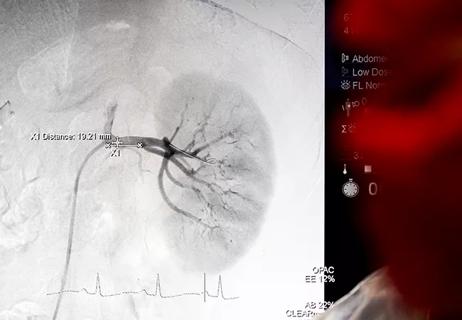
General principles for use of the long-awaited new therapy approach

ACC panel issues call to action to achieve CV health equity in an underserved population

Get a glimpse of the facilities and technologies used by the nation’s top-ranked heart program
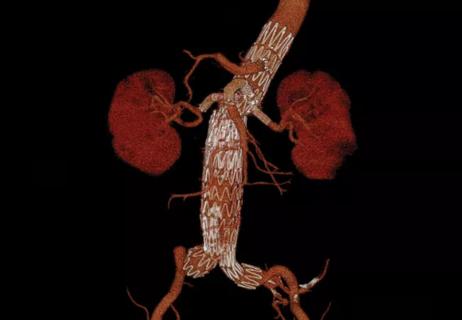
EVAR pioneer Dr. Juan Parodi surveys the past and future of a revolutionary procedure
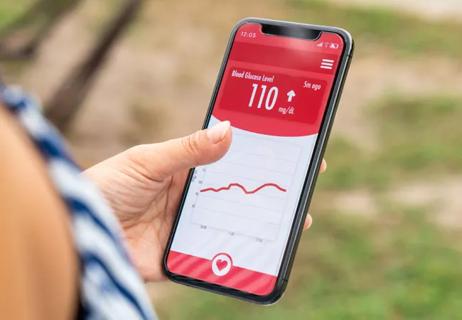
Latest systems combine continuous glucose monitoring with automatic basal insulin delivery

Common congenital lesion is not always benign

New study yields pre-pandemic insights for the post-pandemic landscape
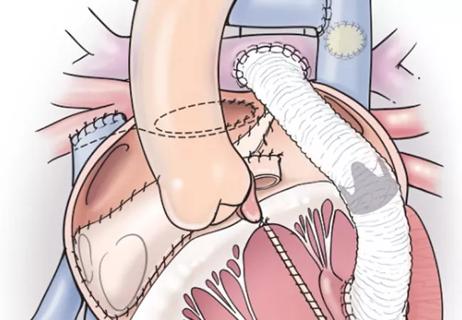
Series of five patients successfully treated with ‘ventricular switch’